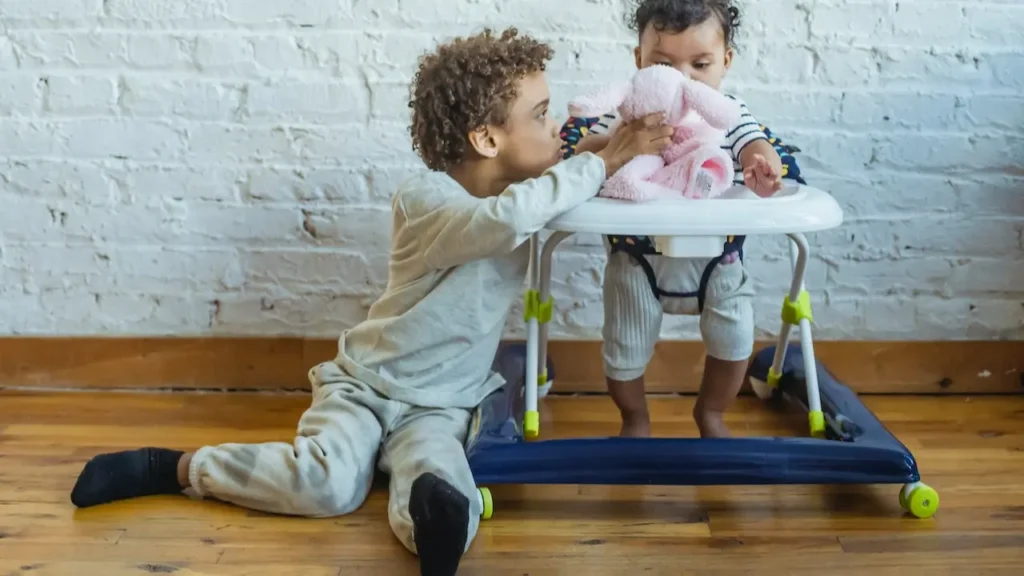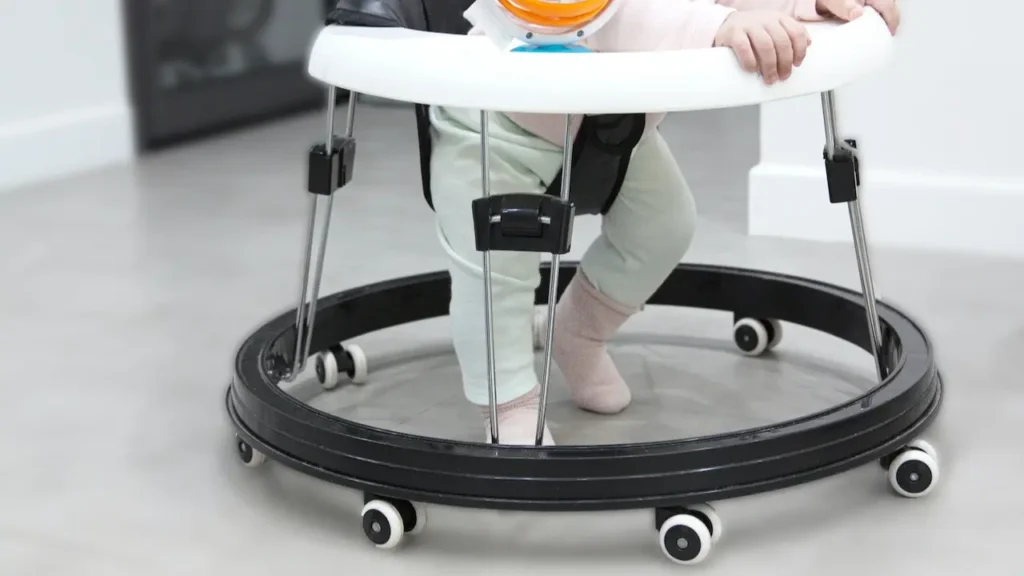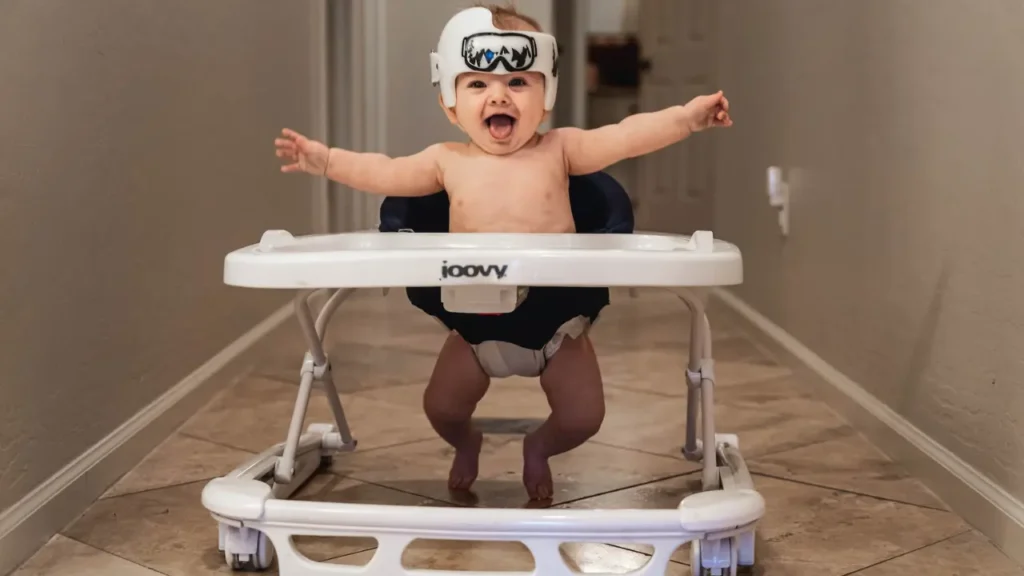Unleash the Potential of Baby Walkers: Supercharge Your Child’s Development
Introduction
Watching your baby transition from crawling to walking is an exciting milestone in their development. As a parent, you may be wondering how you can support and accelerate this process. One popular option that many parents consider is using a baby walker. In this article, we will explore the benefits of baby walkers and how they can positively impact your child’s development.
The Importance of Crawling and Walking
Before diving into the topic of baby walkers, it’s essential to understand the significance of crawling and walking in a child’s development. Crawling helps babies strengthen their muscles, develop coordination, and improve spatial awareness. It lays the foundation for important motor skills needed for walking and other physical activities.
Walking, on the other hand, marks a major milestone in a child’s development. It signifies increased mobility, independence, and the ability to explore their surroundings. Walking promotes the development of leg muscles, balance, and coordination, contributing to overall physical and cognitive growth.

Understanding Baby Walker
Baby walkers are devices designed to support and assist babies in moving around before they can walk independently. They typically consist of a seat suspended in a frame with wheels or casters attached. Baby walkers offer a fun and interactive way for infants to move around while providing some level of support and stability.
Benefits of Using Baby Walkers
A. Enhanced Motor Skills Development
Using a baby walker can aid in the development of motor skills. As babies push themselves forward in a walker, they engage their leg muscles and build strength. The repetitive motion of moving their legs helps them develop coordination and balance, which are crucial for walking.
B. Strengthening Muscles
Baby walkers provide an opportunity for babies to exercise their leg muscles, promoting muscle development and strength. The act of pushing against the floor while in a walker helps strengthen the muscles in the legs, hips, and core.
C. Promoting Balance and Coordination
By using a baby walker, infants learn to maintain balance and coordinate their movements. As they maneuver the walker, they gradually improve their ability to distribute their weight and control their body’s movements. This practice contributes to the development of balance and coordination skills necessary for walking.
D. Encouraging Independence
Baby walkers allow babies to explore their environment independently. They can move around and reach objects that they otherwise wouldn’t be able to access. This newfound independence fosters their curiosity and cognitive development as they interact with their surroundings.
E. Stimulating Cognitive Development
When babies use a walker, they experience a different perspective of their surroundings. This change in perspective enhances their cognitive development by stimulating their senses and promoting spatial awareness. They learn to navigate obstacles, make decisions, and develop problem-solving skills.

Safety Considerations for Baby Walkers
While baby walkers offer various benefits, it’s crucial to prioritize safety when using them. Explore these viable alternatives that you can take into consideration:
A. Choosing the Right Walker
Select a walker that meets safety standards and is appropriate for your child’s age and weight. Look for sturdy construction, reliable braking mechanisms, and a supportive seat. Avoid walkers with excessive toys or attachments that may pose hazards.
B. Supervision and Safe Usage
Ensuring constant supervision of your baby while they are utilizing a walker is of utmost importance. Ensure that they are in a safe environment free from sharp edges, stairs, or any potential dangers. Limit usage time to avoid overdependence on the walker and encourage natural motor skill development.
C. Clearing the Environment
Before using a walker, remove any hazards such as small objects, cords, or hot liquids from the surroundings. Secure furniture and electrical cords to prevent accidents. Create a safe space for your baby to explore without the risk of injury.
Alternatives to Baby Walkers
While baby walkers can be beneficial, they are not the only option to support your child’s development. Here are some alternatives you can consider:
A. Tummy Time
Engaging in tummy time exercises with your baby helps develop their neck, back, and arm muscles. It also encourages crawling, which is an important precursor to walking.
B. Push Toys and Activity Centers
Push toys and activity centers provide support for babies while they learn to stand and take their first steps. These toys offer stability and allow infants to explore their environment while building strength and coordination.
C. Baby Jumperoo
A baby jumper is a freestanding device that allows babies to bounce and play while being supported in an upright position. It helps strengthen leg muscles and promotes coordination.
D. Baby Exercisers
Baby exercisers are stationary devices that support babies in an upright position. They have adjustable height settings and provide a safe environment for babies to practice standing and bouncing.

Tips for Optimal Baby Walker Usage
To make the most of your baby walker experience, consider the following tips:
- Start using a baby walker when your child shows signs of readiness and can sit upright independently.
- Limit usage time to short intervals, gradually increasing as your child becomes more comfortable.
- Encourage your baby to actively move their legs and explore their surroundings while in the walker.
- Use the walker on a flat and even surface to ensure stability and safety.
- Regularly clean and inspect the walker for any signs of damage or wear.
Expert Opinions on Baby Walkers
Opinions among experts regarding baby walkers can vary. Some experts emphasize the potential benefits of baby walkers for motor skills development, while others raise concerns about safety and delayed walking. It is essential to consult with your pediatrician and consider expert advice when making a decision about using a baby walker.
Conclusion
From crawling to walking, the journey of your child’s development is filled with excitement and milestones. Baby walkers can serve as a useful tool to accelerate the transition and support the growth of essential motor skills. Nevertheless, ensuring the safety of your child should consistently remain at the forefront of your concerns. Remember to choose a suitable walker, provide constant supervision, and create a safe environment for your little one. By combining the benefits of a baby walker with other developmental activities, you can help your child thrive on their path to independent walking.
FAQs (Frequently Asked Questions)
Q1: At what age can I start using a baby-walker?
A1: It is generally recommended to start using a baby-walker when your child can sit upright without assistance, usually around 6 to 8 months of age.
Q2: Are baby-walkers safe for my child?
A2: While baby-walkers can offer benefits, safety is paramount. Follow safety guidelines, supervise your baby at all times, and ensure a hazard-free environment.
Q3: Do baby-walkers hinder natural walking development?
A3: There is some debate among experts. It is advised to limit usage time and provide opportunities for natural motor skill development through activities like tummy time.
Q4: Can baby-walkers replace parental supervision?
A4: No. Baby-walkers should always be used under adult supervision to ensure the safety of the child and prevent accidents.
Q5: What are some signs that my baby is ready for a baby-walker?
A5: Signs of readiness include good head and neck control, the ability to sit unsupported, and showing an interest in moving around independently.
Have a look at the amazing baby-walker https://amzn.to/3DaxhBI
Thank you for your visit https://info4you.in

Leave a Reply